► Range Rover Sport long-term test diary
► Our version is a 3.0 SDV6 HSE Dynamic
► Sporting pretensions but still an RR at heart
Month 14 running a Range Rover Sport: the end of the line
As a nation we seem to have forgotten our suspicion of SUVs. I handed my Range Rover Sport back just as this car and its maker seemed to be reaching new heights of public adoration.
In December Land Rover auctioned the two millionth Defender for an astonishing £400,000, and the following month Defender production finally ceased after 68 years. These two events reminded us of the contribution Land Rovers (and Range Rovers) have made to the nation. They were transport for our farmers, soldiers and explorers, they were the advance guard of Britain’s post-war export drive, and have been big overseas earners ever since.
At about the same time, and rather more trivially, James Corden’s Carpool Karaoke films went as viral as Spanish Flu. The new Late Late Show host drives (or is trailered) around Hollywood in a Range Rover Sport, singing with triple-A-list front-seat passengers such as Stevie Wonder and Adele.
The combined publicity of these events has been beyond value, and has even affected weary old hacks like me. I didn’t know whether to look upon my Range Rover Sport as Windsor Castle on wheels or the road-going equivalent of a Gulfstream jet. Either way, and even after nearly 15 months with the car (we only usually keep them for a year) I still walked up to it blinking slightly in disbelief that this was my daily driver.
Times were not always so good for Land Rover. Australians once said that if you wanted to get into the Outback you should take a Land Rover, but if you wanted to get back out again you should take a Land Cruiser. I had no such worries with my car. In more than 16,000 miles the only problem was a one-off windscreen wiper failure: not while it was raining, luckily, but when I operated the washers. Rebooting the car cured it, and testing over a few subsequent dry days couldn’t replicate it, so I didn’t take it to the dealer.
Modern service intervals are such that the ‘service soon’ message only appeared a couple of days before the car was due to go back, so it never saw a workshop. A vicious stone chip required a replacement screen, but that was dealt with, at home, by the insurers and Autoglass. The replacement cost would have been more than £1100, the price inflated by the need for two fitters to attend to heave the vast thing into place, but we dodged that bullet too.
Since our car arrived in December 2014 the SDV6 engine has had a thorough upgrade, getting an extra 14bhp but more importantly gaining another 74lb ft of torque and 3mpg and dropping two tax bands. The changes only reinforce our view that this engine in HSE trim is the sweet-spot of the range. The diesel-electric hybrid is impressive but pricey and only available in Autobiography trim, so you’d need to be doing interstellar mileages for the tax and economy advantages to offset the extra outlay. The SVR has also arrived since our car was ordered, but with 550bhp and a claimed 21mpg (so 14mpg in reality) it’s not really a rival, although it is hilarious, and I see a surprising number of them on UK roads.
On economy, various readers have told me they regularly see better than 30mpg from a tank. They might have the benefit of the newer engine: I spent most of my time in the Sport driving like a policeman with my one- and two-year-olds aboard and saw up to 29mpg on steady UK motorway runs and 24mpg in mixed use, improving to 26mpg later, which was my average across the test. As an ‘owner’, that felt about acceptable for a car like this, although I followed the recent downward trend in fuel prices with more interest than most.
Would I have one again? In a hot second. If you’re considering it, you need to be aware that the infotainment system remains worst-in-class: be sure you can live with it, or wait for the excellent new NGI system to make its way over from Jaguar. Heed the ‘Sport’ part of the name too: this is not a car with the hangar-like boot of a Discovery, or even an XC90. Some practicality has been traded for image. But what an image, and what a piece of engineering.
From the driving seat
+ Rivals the BMW X5 for on-road performance
+ 288bhp 3.0-litre V6 turbodiesel more than adequate given ‘lightweight’ aluminium construction
+ On the right tyres, still near-unstoppable off-road
Count the cost
Cost new £75,607 (including £9357 of options)
Dealer sale price £65,224
Private sale price £61,754
Part-exchange price £59,729
Cost per mile 19p
Cost per mile including depreciation £1.22
Logbook: Range Rover Sport 3.0 SDV6 HSE Dynamic
Engine 2993cc 24v twin turbodiesel V6, 288bhp @ 4000rpm, 442lb ft @ 2000rpm
Transmission 8-speed auto, low range, all-wheel drive
Stats 6.8sec 0-62mph, 138mph, 199g/km
Price £66,250
As tested £75,607
Miles this month 720
Total miles 16,054
Our mpg 26.5
Official mpg 37.7
Fuel costs overall £2933
Extra costs None
By Ben Oliver
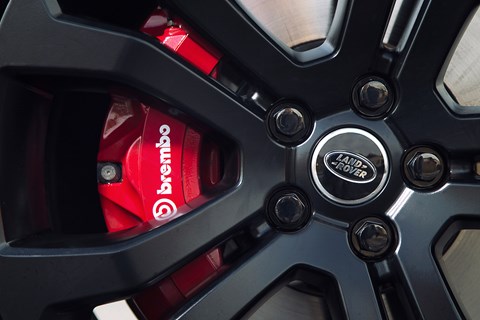
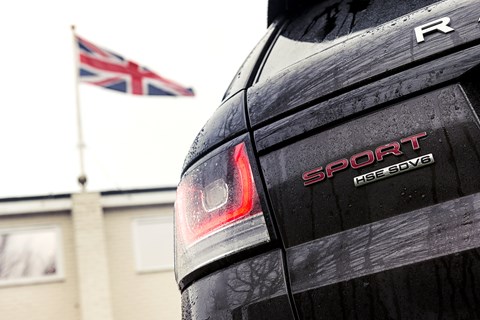
Month 13 running a Range Rover Sport: making hard rain easy
Although we live in the deepest Sussex countryside, you can’t actually be all that remote in the south-east of England: if conditions get really tough, you’re seldom more than an hour’s walk from a cappuccino. Four-wheel drive and bit of extra ride height is useful down our way, but in truth we don’t need any more off-road ability than the oddball Renault Kangoo Trekka I once owned.
But utterly foul weather drew my attention to one of the many reasons we continue to buy SUVs we don’t really need in such huge numbers. It isn’t just the image and the cabin space and the visibility: it’s also the security of driving a car that is completely over-engineered for almost any situation you’re likely to encounter. Like most parts of the country, we had a period of weirdly warm weather but Biblical rain and howling winds. Our little rural lane flooded: nothing by comparison with the devastation wrought elsewhere in the UK, but enough to stop a standard car. The Range Rover Sport just got a decent bow wave going, and got us through.
And in less obviously dramatic conditions it always feels solid and reassuring. Do I honestly think that the gales that cause our family estate car to twitch might actually blow it off the road? Of course not. But does a two-and-a-half tonne SUV feel a slightly better place to place your one- and two-year-olds? Despite everything I know about vehicle dynamics, yes.
Otherwise, the Sport spent a long weekend with us doing what Range Rovers in particular do so well: doubling as a proper, desirable luxury vehicle and utilitarian transport. It collected relatives arriving from the US with two weeks of bags, hauled bikes out into the South Downs to burn off the calories and took a load of junk to the recycling centre afterwards. Its time here is nearing an end: I’d really like to have been able to keep it.
By Ben Oliver
Month 12 running a Range Rover Sport: the puddle light show!
I first saw the simple designer’s sketch of the Range Rover Sport projected by its own puddle light two and a half years ago, when I parked a prototype outside an Australian roadhouse, en route from Melbourne to Lake Eyre. It was the first time I’d exited a Sport in the dark, and even after an Outback-sized day at the wheel this clever (but not especially expensive) idea won a girly ‘ooh!’ from me and photographer Mark Bramley.
It sounds like a gimmick, but the car industry desperately seeks out ‘surprise and delight’ features like this. When you can hear the surprise and delight, you know you have a winner. Land Rover’s design department has been on fire of late (not literally), its work central to the brand’s global success. As one very senior industry figure said to me recently, perhaps with a hint of jealousy, ‘do you think they sell all those Range Rovers in China for their off-road ability?’
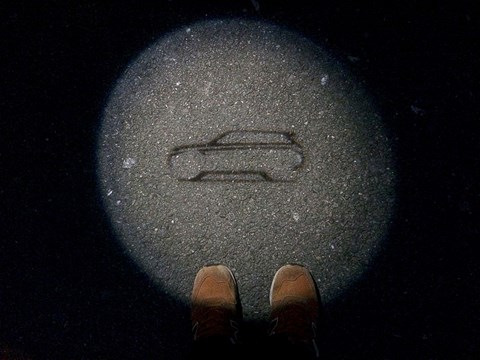
As an ‘owner’, and even after almost a year, the appeal of those looks isn’t wearing off. This might sound like a backhanded compliment, but I love the way this car looks at night, when you get to see the sculptural complexity and jewel-like detailing of the lamps. Inside, the subtle blue ambient lighting resists the temptation (succumbed-to by some other premium brands) to turn the cabin into Studio 54, circa 1977.
And those puddle lights? I no longer squeal with delight, but I still love them. And unlike in the Outback, in a dark and dismal British winter I find I actually need them.
By Ben Oliver
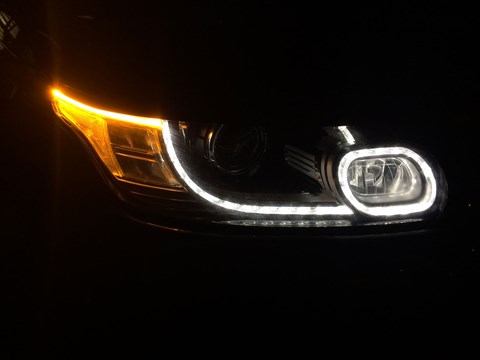
Month 11 running a Range Rover Sport: an impromptu Tesla twin-test
The Tesla Model S makes almost every other car feel very 20th-century, especially if you step straight from one to the other.
Unfortunately it proved especially true of my big diesel SUV: the contrast heightened by the fact that I was driving/being driven by a Tesla with Autopilot, and that the Tesla and the Range Rover have, respectively, arguably the best and worst user interfaces at the pricier end of the market. But I still love my explosion-powered death machine.
By Ben Oliver
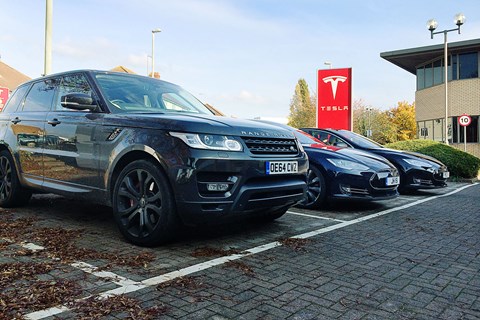
Month 10 running a Range Rover Sport: our premium SUV in pictures
Often it’s the details that let down an otherwise silky smooth long-termer. Not so here, but best not to mention the infotainment.
Has been upgraded, but this one’s just fine
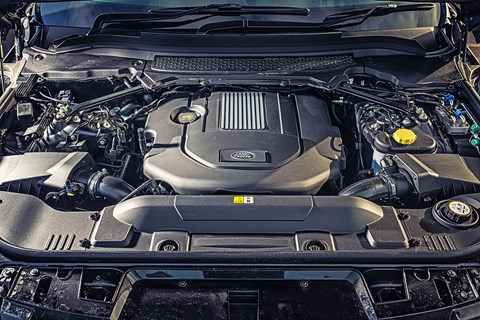
Ordered in August 2014 and delivered that November, our 292bhp SDV6 twin-turbo diesel just missed out on the upgrade which brings another 14bhp, 74lb ft and 3mpg, and drops the car two tax bands. But I have no complaint with the easy, torquey performance and economy which can nudge a real 30mpg.
Colour and trim options: feeling brave?
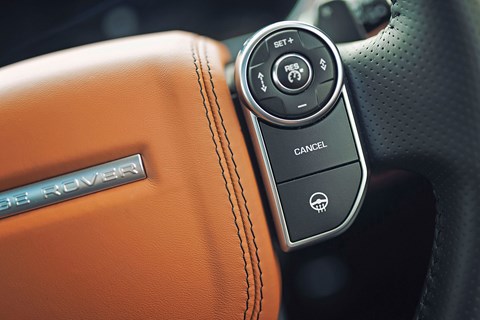
Having looked at the (very conservative) online configurator for another premium SUV recently, I have renewed respect for the huge range of colour and trim options the RR Sport offers. I also had a sit in the new Bentley Bentayga, and it doesn’t feel that much more premium than our ebony-and-tan-upholstered Range Rover.
Big black rims look great, but never again
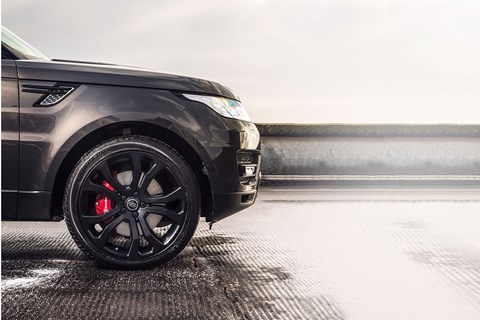
A friend with a beautiful old Range Rover Classic insists that off-roaders should only be specified with small wheels and clear glass all round. I think modern design suits privacy glass and big wheels, but the slight ride penalty and the obviousness of even the smallest nick on our maxed-out 22-inch rims means I’ll downsize next time.
‘Infotainment’ long overdue an upgrade
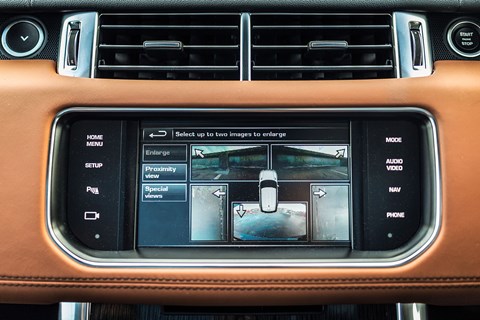
In his report after borrowing the RR Sport for a Le Mans trip, Ben Pulman confused my respect for the accuracy of the sat-nav’s mapping with a liking for the ‘infotainment’ system as a whole. Don’t get me wrong: the touchscreen interface is clunky, slow, and prone to tantrums: the worst thing about a great car.
By Ben Oliver
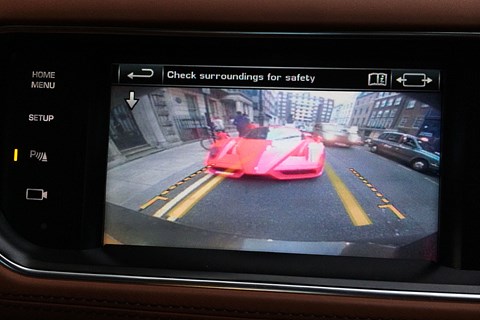
Month 9 with our long-term Range Rover Sport: objects behind you may be very expensive
The Range Rover Sport’s £700 Surround Camera system is designed for off-roading, but it will also save you from ruinous insurance claims when you’re parking in central London during Supercar Season and one of these appears on the monitor. The side cameras are great for avoiding kerbs and I use the nose-cams daily to peer out into blind junctions. Whether I should be driving a car so big that it requires its own perimeter CCTV system is another matter.
By Ben Oliver
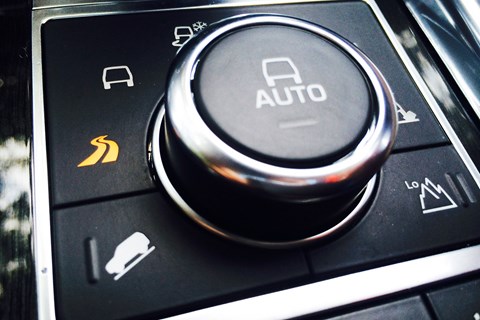
Month 8 running a 2015 Range Rover Sport: you don't have to roll with it
I was impressed with the Dynamic Response system when I first drove a prototype Range Rover Sport two years ago, and after eight months with this car I find myself clicking the rotary controller one stop to engage it every time the road gets twisty. It sharpens the handling and powertrain response noticeably, but the anti-roll function is its real advantage, reducing seasickness for all occupants. Only the entry-level HSE spec misses out on Dynamic: make sure you don’t.
By Ben Oliver
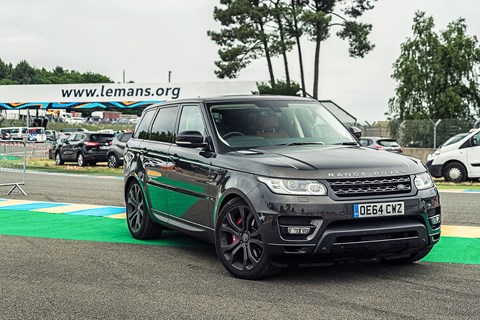
Month 7 running a Range Rover Sport: from London to La Sarthe
I never seem to go to the Le Mans 24hrs in anything sensible. My maiden trip was in a Caterham Seven. Which had a speedo needle that abandoned its post above 80mph and slipped back down to zero. And I was camping that weekend. And it rained for the duration of the race. This other time, a few months into our courtship, the missus and I went in a Lotus Evora – and ended up sleeping in it outside the Calais ferry terminal. Can’t imagine why she’s never asked to go back.
If you descend on the Circuit de la Sarthe in June, it’s all part of the fun, but this year I was working at the race, and with a camera crew and a photographer in tow, something small and British just wasn’t going to cut it (my Mini included). So I took something big and British instead: Ben Oliver’s Range Rover Sport.
Straight from clogging up the roads around Henley on last month’s Volvo XC90 Giant Test, the Sport and I made a brief overnight stop back in London, then headed for Le Chunnel. And having lied on the booking system and claimed the Sport was over 1.85m, we joined the coaches, caravans and motorhomes. Why the fib? Because taller vehicles get to go in special Channel Tunnel carriages without kerbs and toilets to slalom around. It means a longer walk for a wee, but massively reduces the chance of needing to call Ben O and apologise for taking a chunk out of one of the optional 22in (and £3228!) wheels.
Our first night was in Paris, an easy schlep south on the autoroute at a reasonable speed. At least until we reached the Périphérique, whereupon the sat-nav lost the plot in traffic and took us on a 20min detour that literally brought us back to where we started. Two months back Ben reported that ‘having been unconvinced at first by the system’s clunky graphics and slightly slow responses, I now feel I can trust it.’ I couldn’t agree less: it takes so long to input each letter for your destination that it’s actually a dangerous distraction; you can’t easily zoom or manipulate the map; and the world’s motoring journalists have collectively run out of old games consoles to compare the ancient graphics to.
The rest of the trip though, reinforced all the good Mr Oliver has been saying for the past six months. The soft throttle, torque-rich engine, slab-sided styling and high ground clearance mean it’s easy to drive in Paris or to clamber up a steep slope by the famous Dunlop Bridge. It feels imperious on the motorway, you feel imperious looking down upon everyone from the lofty driving position, and your hard-working passengers feel imperious being chauffeured around in leather-lined luxury while all their expensive gear is stored in the boot.
All the ‘ifs’ and ‘buts’, the niggles here and there, they don’t really matter because the Sport feels special and unique in a way no German or Japanese rival can counter. Practically, I’d have been better off in our cameraman’s BMW 335d xDrive Touring for the trip – which has just as much useable space, manages to be both quicker and more economical, costs a heap less, and has a sat-nav that works – yet I’d rather have been in the Sport. That it, plus its bigger brother, and the Disco, are the only SUVs I’d ever consider owning says a lot about what Land Rover gets spot on.
By Ben Pulman
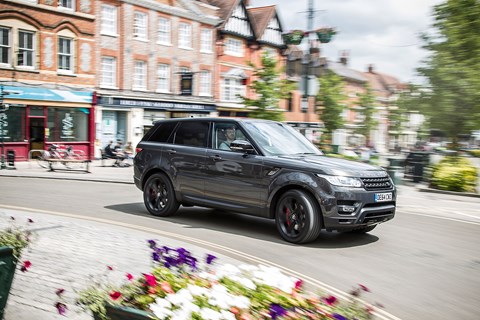
Month 6 running a Range Rover Sport: heavy is the new light
Let’s be honest, I don’t need an off-roader. If you have one too, chances are you don’t either. I know that a tall, heavy car with unnecessary four-wheel drive offends all that is holy in vehicle dynamics and efficiency. If you’re reading this magazine, you know it too. But few seem to care. Here in the UK, the Kia Sportage outsold the Ford Mondeo last year. Globally, Land Rover is growing at a furious rate: this year it will make well over 400,000 cars. Before you get too sniffy about SUVs, keep in mind the thousands of jobs and billions of pounds of income they create here each year.
So why do we love them so much? Few of Land Rover’s 400,000 buyers care much about design and engineering purity, or fitness for purpose. They just know that a big, airy cabin with great views, lots of space and a greater sense of security is a nice thing to have, and the ability to bounce up the occasional kerb or down a muddy track is handy, and all the more so if you’re a terrible driver and/or live in a country with even worse roads than ours.
I do care about fitness for purpose and engineering purity. I went to see Gordon Murray recently and I parked my Range Rover Sport out of sight of his office lest the high priest of lightweight be offended by the leviathan I’d arrived in. My head and my petrolhead heart both tell me that I need a diesel estate car – and we have one as our other car. But the irrational, soft, comfort-seeking human being in me just loves the Range Rover. Honestly, you should feel sorry for me having to drive this car every day. It’s a daily internal struggle: one which my rational side is rapidly losing.
If you remain an SUV-hater, you probably haven’t lived with one this good: I appreciate that not all are. If you have and you say you still can’t see the appeal, I’m not sure I believe you. Everyone is giving in: me, Mondeo Man and the board of Rolls-Royce. Maybe Gordon Murray will do an iStream SUV next. Resistance is futile.
By Ben Oliver
Range Rover Sport diary notes: Tim Pollard's perspective
I drove Ben's Rangie for the first time recently - the first time I'd driven one since launch in 2013. Two years later, how's it holding up? Back then I described the Sport as the Swiss army knife of cars: an analogy duly illuminated by driving it across the Cotswolds at pace and wondering how a 2.1-tonne giant could handle so well; by taking it around Land Rover's Eastnor Castle off-road course and never once getting stuck wading rivers and climbing muddy ravines impassable on foot; by testing it seven up with all the pews in use. It is an incredibly rounded vehicle, I remember thinking.
Climbing into CAR magazine's metallic brown example, I was reminded how vast this SUV is. It's way less bling than the Mk1 but still has a certain gangsta swagger, especially in our car's bronzed hue and smoked wheels. You sit high up with an imperious view out and it's an easy car to drive, despite its sizable footprint. The 3.0-litre V6 diesel powertrain is spot-on: hushed enough for refined progress, but with a turn of speed when pressing on.
But it's amazing the difference 24 months makes in cabin quality. We've tested the Rangie - this Rangie! - against the latest Volvo XC90 and BMW X5 in the new August 2015 issue of CAR magazine and, without spoiling the result here, it's fair to say the Sport's interior is feeling a bit old-hat in some regards. There's nothing wrong with the materials or fundamental, rather blocky dashboard design, but the arcane sat-nav in our example feels exactly like what it is: ancient and about to be replaced. Bring on the latest eight-inch touchscreen system from the Disco Sport waiting in the wings!
By Tim Pollard
Month 5 running a Range Rover Sport: to the autobahn!
After a 3000-mile round-trip from Melbourne to Lake Eyre in a prototype Range Rover Sport two years ago, I’m utterly convinced of this car’s long-distance credentials. So a mere 1000-mile round-trip to visit family in Germany doesn’t sound like much of a challenge, but it allowed me to test aspects of the Sport’s performance that were irrelevant in the Red Centre. Australia’s famously humourless speed-limit enforcement and the unmade Outback roads meant I seldom broke 70mph on that trip. This time, on derestricted autobahn and with the tyres pumped up I found that the Sport feels utterly planted at up to 130mph.
This allowed me to deliver our two tiny children to Bremen sooner and thus avoid rear-cabin meltdown, but without my wife noticing my speed and ordering me to slow down. Driven like this, the Sport returned around 24mpg, and 28 to 30mpg where there was a speed limit. Not quite the combined 38mpg that Land Rover claims, but not bad for a laden, full-size SUV. An 80-litre tank means stops every 450 miles, which is longer than either kids or adults can manage, but I still wish I could have had the 105-litre tank from the petrol V8.
In Australia, there weren’t many turns to be made, and much of our route was off-road. By contrast, the tangle of autobahn at the northern end of the Rhine-Ruhr megalopolis demands sat-nav, and the Sport’s coped admirably. The voice prompts were caught out only twice, starting the guidance too late and then cutting it off when the system realised we were already at the junction. But both times the super-clear visual prompts kept me right. Having been unconvinced at first by the system’s clunky graphics and slightly slow responses, I now feel I can trust it.
The Sport’s boot swallowed a week’s worth of luggage, plus two buggies. But only just: that fast rear screen angle limits space and means that you can’t quite pack with the same abandon as you can in a Discovery. But the real discovery of the week’s trip was the £177 optional iPad holder which clips around the front headrest rails. Well-engineered and secure, it was a godsend for keeping a two year-old quiet on the six-hour run back to the ferry at Calais. Not sure why anyone would fork out thousands to fit screens into the headrests.
By Ben Oliver
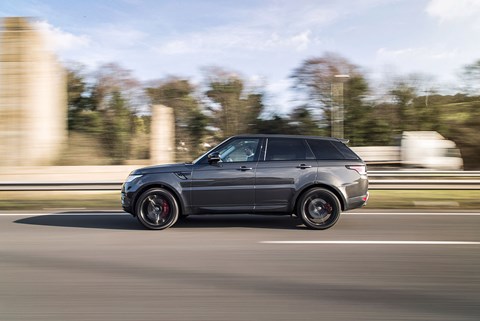
Month 4 running a Range Rover Sport: is fuel consumption ruinously expensive?
With a decent mileage on the odometer, I can tell you something meaningful about the Range Rover Sport’s fuel consumption. Good news: it’s not as ruinously expensive as a car with the words ‘Range Rover’ and ‘Sport’ in the name would suggest.
Bad news: the claimed 37.7mpg seems a distant dream. Mixed use returns a pretty consistent 24mpg, as does fast autobahn work, of which more next month. Steady UK motorway runs give 28 to 30mpg. On balance, not too painful.
By Ben Oliver
Month 3 running a Range Rover Sport: getting stuck in a field #Embarrassing!
I could have kept this quiet, of course. If I’m going to admit it, I feel like I ought to recite my off-road credentials just so you know I’m not a total muppet, although this carries the risk that I’ll sound like one of ‘The Off-roaders’ from The Fast Show. I have, however, taken cars to 18,000 feet in the Himalayas, 400 miles north of the Arctic Circle, across the Kalahari and into Australia’s Red Centre. And not got stuck. Where did I get stuck? In the paddock next to my house in Sussex.
Certain innocuous-looking surfaces are like fly-paper for even the most advanced four-wheel drive. Beach gravel is one, and waterlogged grass is another. This patch had the consistency of tiramasu. The revs rose and the car sank.
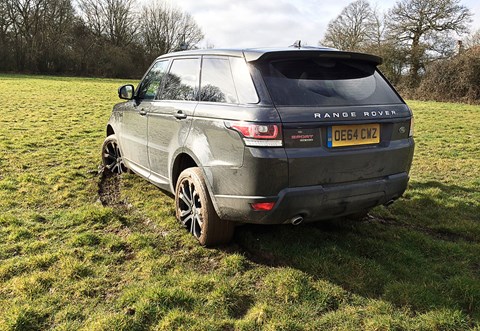
No blame should attach to the Range Rover Sport. Even the excellent Terrain Response 2 system, which can tell what kind of trouble you’re in and optimise the car’s systems to suit, could not dig me out of these four small holes. The very road-orientated tyres didn’t help. I might have freed myself, either with a set of recovery tracks or by the time-honoured method of digging it out and building a small road under the wheels. Instead I begged a tow from my neighbour’s Massey Ferguson, once he’d stopped laughing. I will take the Sport off-roading properly, to show you what I know it’s capable of. Until then, and to misquote The Fast Show, ‘let’s on-road’.
By Ben Oliver
Month 2 running a Range Rover Sport: getting to know its surprise-and-delight features
By some miracle, my Range Rover Sport’s first photoshoot coincided with some rare winter sun. Clean (for once) and in the sunshine, the Havana paint looked sensational. Its ability to echo the colours around it reminds me of the ‘invisibility’ paint on 007’s Vanquish. Photographer Richard Pardon followed me through Brighton and reported that heads turned. The car looked ‘special’.
And the Sport proved brilliant on a series of sub-zero mornings. If there wasn’t room to put it away overnight the heated screen cleared the frost quickly and without foul chemicals. I was previously cynical about heated steering wheels: perhaps like you, considering them a luxury too far. Now I’m a convert, and engineers will tell you that the most energy-efficient way to warm people up is by contact, rather than by heating the air around them.
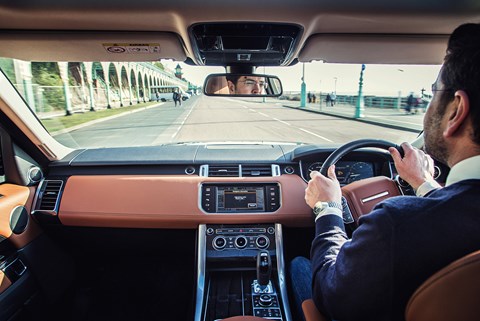
You can’t drive in gloves if you want to use the touchscreen. And I do: I exit my drive unsighted onto a fast lane, and the nose-cams that let me look up and down the road before entering it are a genuinely useful option. I’m warming to this car fast, in every sense.
By Ben Oliver
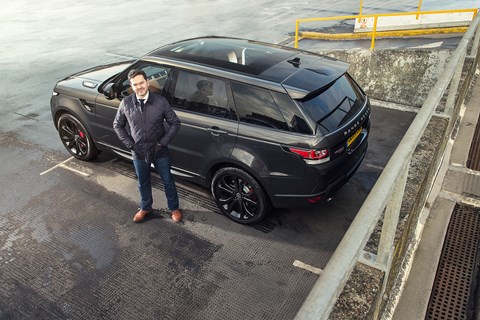
Month 1 running a Range Rover Sport: the introduction
What’s in your perfect three-car garage? Let me guess. A Ferrari, a Porsche 911, and a Range Rover? Actually, I’m not guessing. That’s what you told us when we asked you in some recent reader research. So imagine how relevant – and lucky – I felt when I briefly had two of the cars from your dream garage parked in my real garage.
I’ve been writing about our used 997 for six months now. The Range Rover Sport has arrived partly to help cope with the second child we didn’t know we were having when I started the process of acquiring the Porsche, and partly to allow my colleagues to run the 911 for a while and give their views on it.
But mostly, the Range Rover is here because it makes a good story. You want to know what it’s like to live with, and this second-generation, lightweight, aluminium-bodied Sport is already selling in huge numbers and is central to Land Rover’s astonishing, export-led 9% growth in 2014. You like it; George Osborne loves it.
First task was to spec it: the great joy (and agony) of the new-car buying experience. Last time I drove a Sport, I took what I could get. It was the summer of 2013 and I was in Australia, taking an early prototype on an expedition to Lake Eyre in the middle of the Outback, to celebrate the half a century since Donald Campbell set his land-speed record there in Bluebird.
I loved the way that car ate up the vast Outback distances, and coped with the testing conditions, though we don’t get much deep sand, fine dust and 40-degree heat in Sussex. I knew that my car wouldn’t need much help to feel special. So I went for the entry V6 diesel: it’s also the most relevant choice as it’s easily the biggest seller, and hardly under-endowed at 292bhp (only 47bhp shy of the V8 diesel) and 442lb ft of torque. The HSE Dynamic trim brings the more advanced, automatic Terrain Response 2 for idiot-proof off-roading (this will be tested) and the Dynamic Response and Torque Vectoring that make this big SUV handle with astonishing agility and composure.
It’s definitely worth the five-grand uplift over the base HSE spec, and still ten grand cheaper than the top Autobiography Dynamic trim. But I spent almost all the ‘saving’ adding the features I really wanted to try (or just wanted) including the vast, uninterrupted panoramic roof, the surround camera system, adaptive cruise with ‘queue assist’ and the admittedly tarty huge wheels.
Next, the colour. ‘Havana’ is a deep metallic brown that looks like matt charcoal until the sun hits it. It’s not as showy as those polychromatic paintjobs that were popular in the noughties, but like suede or a Weimaraner’s coat, it can be two shades at once. I’ve never seen a colour quite like it.
With black wheels, red calipers and a tan interior, it looked sensational (and accurate, as it turns out) on the online configurator. But uncertain of my styling chops, I sent the spec to Land Rover’s design chief Gerry McGovern. (This is not, I appreciate, an option open to most punters.) Gerry said he liked it, but that I should do something completely different, and spec it in the same Chile Red as the launch cars.
But you’ve seen that plenty before, so I ignored him and ordered it in Havana anyway. The editors of this magazine, with their horror of dark cars, will hate it. If it just looks black in the photographs, come round to mine for a better look. I think it’s sensational: not unlike the car it clothes.
By Ben Oliver
Read more Range Rover Sport reviews